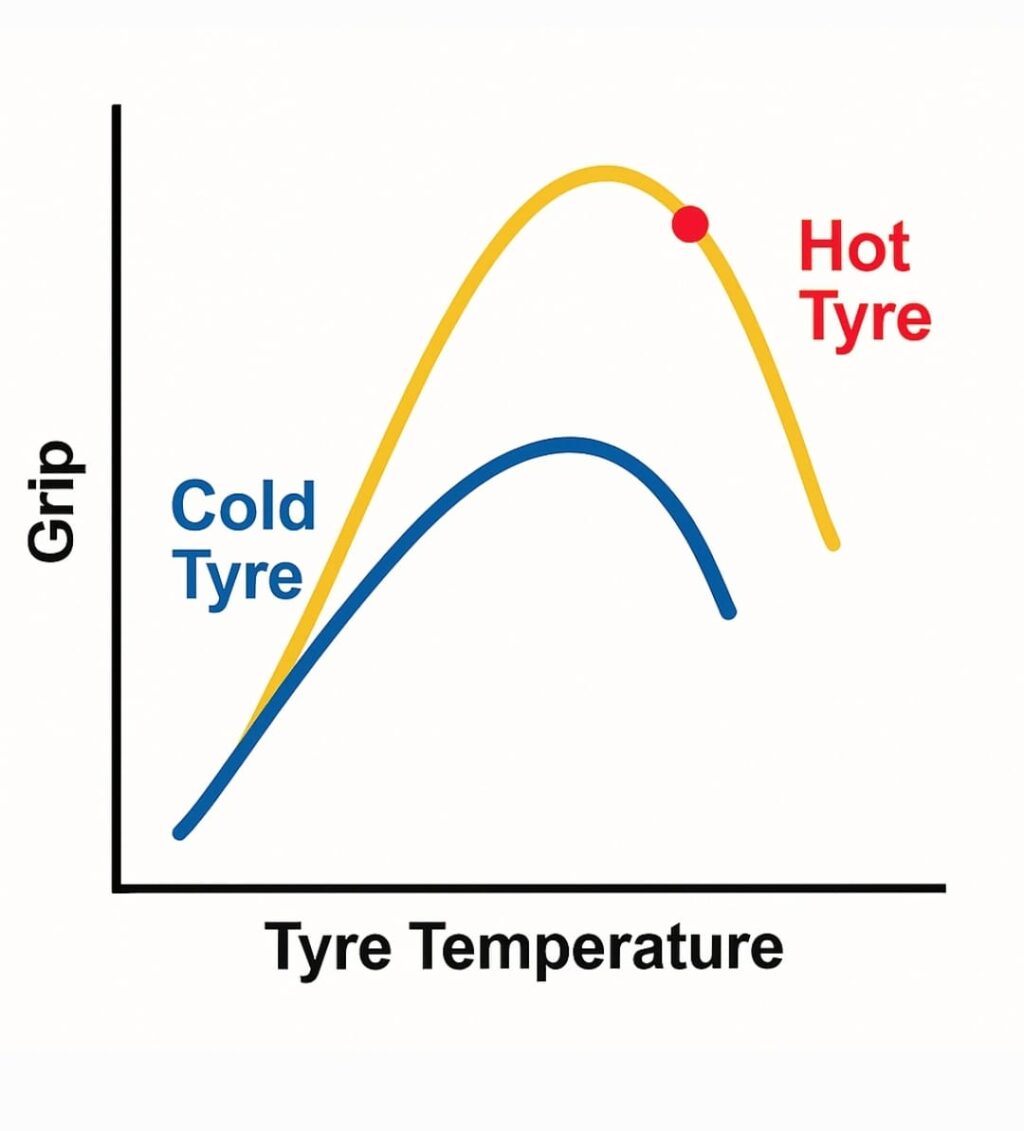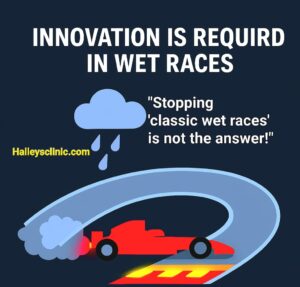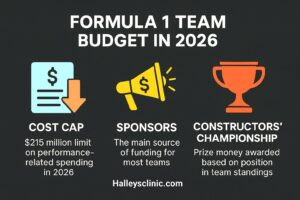How to Prepare F1 Tyres for the Perfect Race Start? Physics explained

- by Dr. AK Rana
When F1 cars line up on the grid, the race hasn’t really started. Before the lights go out, drivers go on a warm-up lap that may look casual—but it’s actually a high-speed science experiment.
The goal?
Warm the tyres to perfection and unlock max grip.
In F1:
Warm tyres + Downforce = Insane cornering speeds.
Let me tell you, why? How? Step by step…
…
Why Warming Tyres Is Critical? F1
…
Tyres are made from viscoelastic rubber compounds that behave very differently depending on temperature.
Cold tyres feel like plastic—they offer poor grip, poor deformation, and are prone to sliding.
Warm tyres, on the other hand, stick, bite, and flex the way F1 engineers want.
…
What Is Tyre Grip Made Of?
Grip comes from two parts:
μ_total = μ_adhesion + μ_hysteresis
Adhesive friction – from the rubber sticking microscopically to the tarmac.
Hysteresis friction – from the tyre deforming and absorbing energy over surface roughness.
Temperature’s Role
At low temperatures: rubber is stiff → low adhesion, low deformation → poor grip.
At optimal temp (90–110°C): rubber is soft and springy → high contact and energy absorption → peak grip.
At high temp (>130°C): rubber becomes too soft → over-deformation, graining → grip drops.
Friction vs. Temperature – The Bell Curve
Tyre grip improves with heat until a peak, then drops if overheated.
μ(T) ≈ μ_max × e^–[(T – T_opt)/σ]²
Where:
T = Tyre temp
T_opt = Optimal temp (≈ 90–110°C)
σ = Temp sensitivity
μ_max = Max grip level
This is why the warm-up lap is so precise: drivers aim to hit this “golden temperature zone.”
…
Viscoelastic Rubber & Viscosity
Tyres are viscoelastic materials—part spring, part damper. This means they resist fast deformation (viscous) but bounce back slowly (elastic).
As it heats up, its viscosity (η) drops, allowing better deformation and less resistance, improving overall tyre performance up to an optimal point.
…
Classic Physics in F1
F_friction = μ × N
μ = Coefficient of friction (which varies with temperature).
N : Normal force (from car weight + aerodynamic downforce).
In F1:
Warm tyres + Downforce = Insane cornering speeds.
Now you know the reason!
Example:
Cold Tyre – μ = 0.8, N = 5000 N → F = 4000 N
Hot Tyre – μ = 1.4, N = 5000 N → F = 7000 N
That’s a 75% increase in grip just from heating!
…
Hot vs Cold Tyres – Real-Life Comparison
1. Grip (μ):
Cold Tyre – Around 0.7 to 0.9
Hot Tyre – Around 1.3 to 1.5
2. Viscosity:
Cold Tyre – High, stiff rubber
Hot Tyre – Lower, soft and flexible
3. Braking Stability:
Cold Tyre – Unstable, locks up easily
Hot Tyre – Stable and controlled
4. Cornering Speed:
Cold Tyre – Lower, understeer risk
Hot Tyre – High, better turn-in and confidence
5. Deformation:
Cold Tyre – Poor contact with the road
Hot Tyre – Perfect deformation and grip
…
Final Takeaway
A well-executed warm-up lap is science in motion:
It balances friction, deformation, and molecular behavior.
It turns cold rubber into a performance asset.
It makes the difference between a good launch and wheelspin into Turn 1.
…
You’re not just warming tyres.
You’re fine-tuning the car’s soul.
…
Stay tuned with Halleysclinic.com
Contact: halleysclinic@gmail.com
Don’t forget to follow our Instagram account https://www.instagram.com/halleysclinic
also read Why is Qualifying So Important at the Saudi Arabian Grand Prix?






1 thought on “How to Prepare F1 Tyres for the Perfect Race Start? Physics explained”